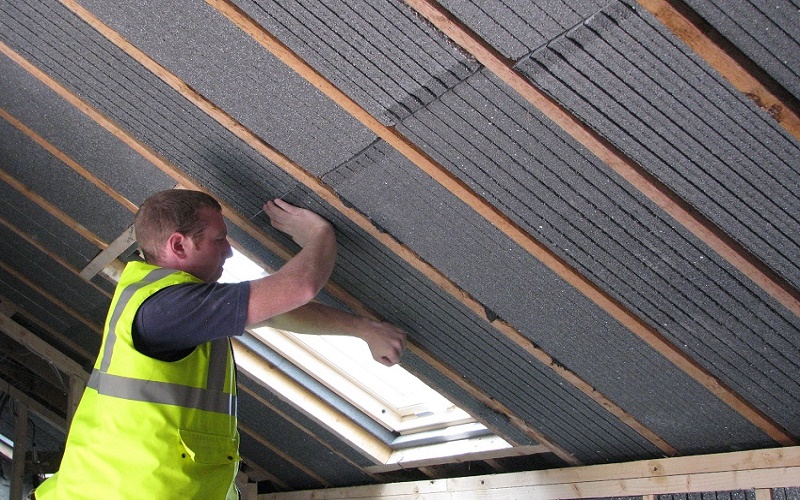Metal sheds are popular for their durability and utility, but they often lack proper insulation, leading to uncomfortable temperatures inside during extreme weather. Insulating a metal shed is essential to create a more comfortable and usable space, especially if you plan to use it for storage, workshops, or hobbies. While professional insulation services can be costly, there are several budget-friendly methods and materials you can use to insulate your metal shed effectively.
Understanding the Importance of Insulation
Metal sheds are prone to extreme temperatures due to their material properties. In summer, they absorb heat quickly, becoming unbearably hot inside. In winter, they lose heat rapidly, making the interior freezing cold. Insulation acts as a barrier against these temperature fluctuations, helping maintain a more stable and comfortable environment inside the shed. Additionally, insulation can prevent issues like condensation, which can cause rust and damage to stored items.
Assessing Your Shed and Setting a Budget
Before starting your insulation project, including how to bid insulation, assess your shed’s size, layout, and current condition. Measure the walls, roof, and floor space to estimate how much insulation material you’ll need. Determine a realistic budget based on the size of your shed and the level of insulation required. Setting a budget will guide your choices regarding materials and methods for bidding on the insulation job effectively.

Cost-Effective Methods for Insulating a Metal Shed
Here are several cost-effective methods you can use to insulate your metal shed without spending a fortune.
Bubble Wrap Insulation
Bubble wrap is an inexpensive yet surprisingly effective insulation material for metal sheds. It works by creating a barrier of air pockets that reduces heat transfer. To insulate your shed with bubble wrap, measure and cut the bubble wrap to fit the walls and roof of your shed. Attach it using duct tape or spray adhesive, ensuring all gaps are covered.
Fiberglass Insulation
Fiberglass insulation is a conventional and affordable option for insulating metal sheds. It comes in rolls or batts and is relatively easy to install. To use fiberglass insulation, measure and cut the insulation to fit between the shed’s wall studs and roof rafters. Wear protective gear and use a staple gun to secure the insulation in place.
Reflective Foil Insulation
Reflective foil insulation, such as radiant barriers, can effectively reduce heat gain in a metal shed. This type of insulation reflects radiant heat away from the shed’s interior. Attach the foil insulation to the shed’s interior walls and roof using adhesive tape, ensuring a tight seal to maximize effectiveness.
Spray Foam Insulation
While slightly more expensive than other options, spray foam insulation provides excellent thermal performance and can be a worthwhile investment for long-term energy savings. Follow the manufacturer’s instructions to apply spray foam insulation to the shed’s walls and roof, working in a well-ventilated area for safety.
Recycled Materials
Consider using recycled materials such as denim insulation or shredded newspaper as a budget-friendly and eco-friendly insulation option. Install recycled insulation between studs or rafters similar to fiberglass insulation.
Tips for Effective and Affordable Insulation
In addition to choosing the right materials, consider the following tips to ensure a successful and budget-friendly insulation project, including the cheapest way to insulate a metal building:
- Seal Gaps and Cracks: Before insulating, seal any gaps or cracks in the shed’s walls and roof to prevent air leakage, which is crucial for achieving effective and affordable insulation.
- Maximize Natural Light: Adding windows or skylights can maximize natural light and reduce the need for artificial lighting, contributing to cost savings in your insulation approach.
- Optimize Ventilation: Ensure your shed has adequate ventilation to prevent moisture buildup, which can impact the effectiveness of insulation and lead to future issues.
- DIY vs. Professional Installation: Consider your skills and budget when deciding between DIY installation and hiring a professional. DIY methods can often be the cheapest way to insulate a metal building if you have the necessary skills and time.
- Monitor Energy Usage: After insulating, monitor how it affects energy usage. A well-insulated shed should require less heating or cooling, translating to potential cost savings over time.
Conclusion
Insulating a metal shed on a budget is achievable with careful planning and resourcefulness. By assessing your shed’s needs, setting a realistic budget, and selecting the right insulation materials and methods, you can create a more comfortable and usable space without breaking the bank. Remember to consider factors such as climate, intended use, and desired insulation level when planning your project. With the right approach, you can transform your metal shed into a functional and inviting space for various activities throughout the year.



